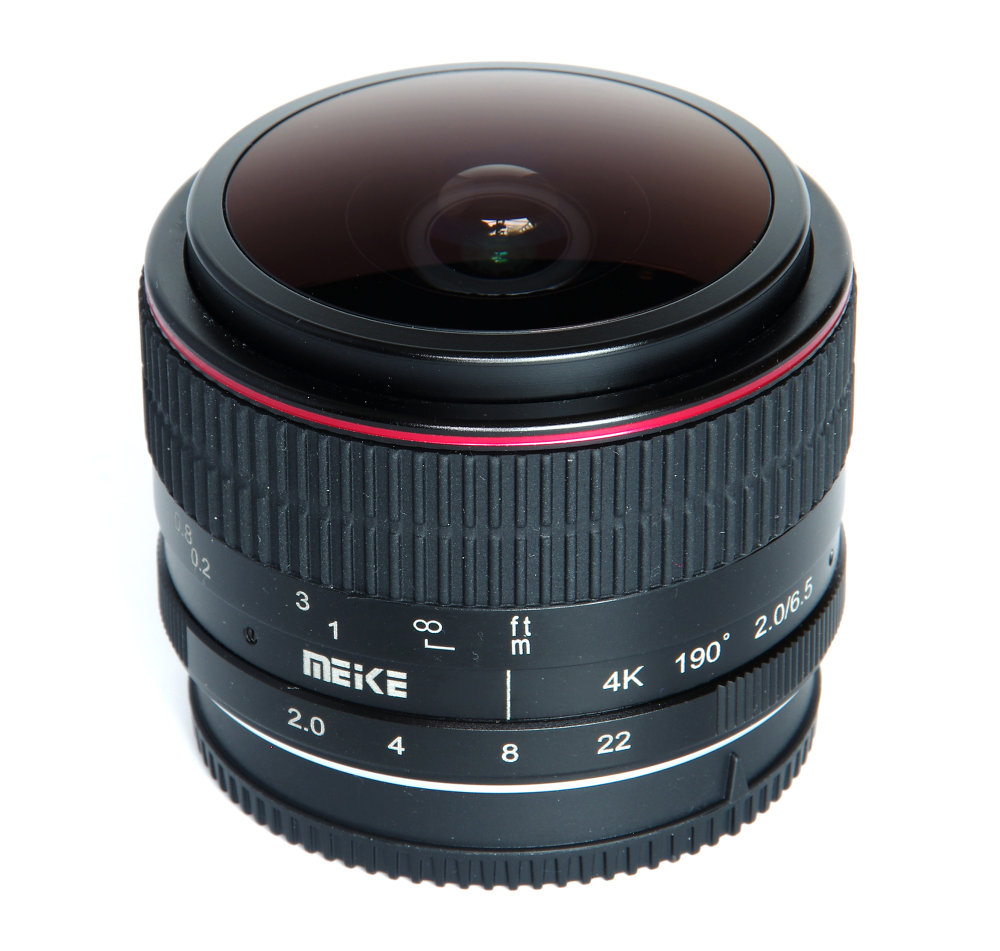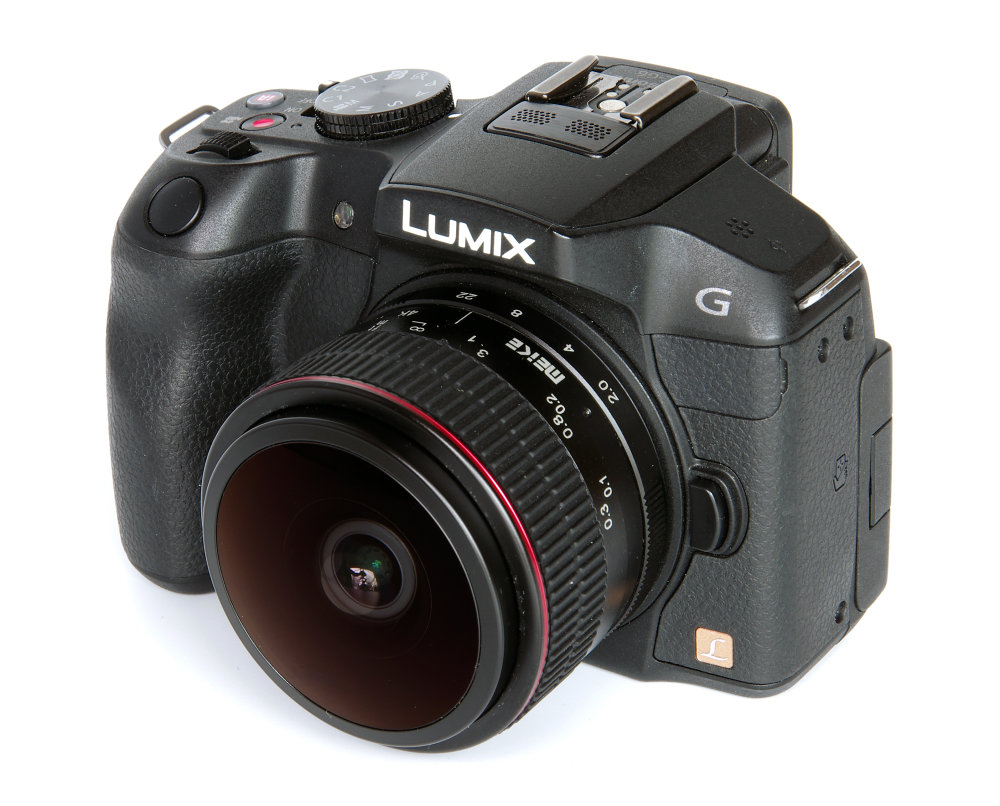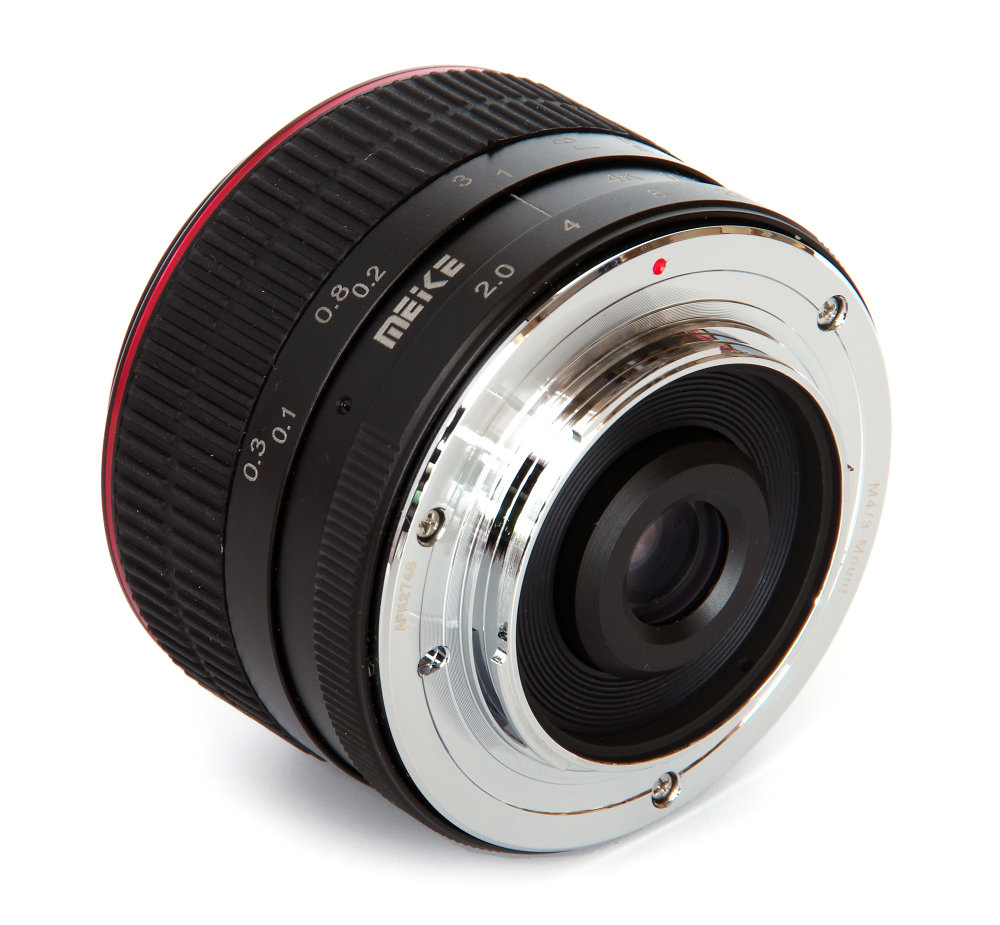Meike 6.5mm f/2.0 Fisheye Lens Review
Meike 6.5mm f/2.0 Fisheye Handling and Features
The lens is small, not overly heavy at 300g, and offers a very wide f/2 maximum aperture plus a very wide 190-degree field of view. Definitely there is a need to watch out for fingers, feet, shadows and coats edging their way into the pictures. The image circle suits APS-C format, but the version used here is for MFT and on the Panasonic Lumix G6 used for the review offers a circle cut off at top and bottom. The normal easy recognition of the field of view of a lens via its focal length breaks down with fisheye optics and any focal length from this 6.5mm to 17mm might still be a fisheye. The description means that straight lines are no longer straight and the lenses have huge creative potential for a wild and wacky view of the world. In the 1960s, fashion photographers took to the fisheye lens in droves, along with the wacky fashions found in Carnaby Street.
The front element is not excessively large, but it is slightly bulbous, leaving it quite exposed to potential damage. There is no possibility of employing a lens hood as the field of view is so wide. The push on lens cap fits well, but there is not much lens for it to slide onto. As a consequence it could be easily lost, so a little care is needed. The lens comprises just 6 elements in 5 groups, a fairly simple construction for such an ambitious specification. The lens elements are Multi-layer Nano Coated to help prevent flare. As there is no lens hood this needs to be highly efficient.
The wide and smooth focusing ring uses internal focusing, down to a very close 5cm. The length of the lens does not change during focusing, very useful when we get in close.
Closest to the camera body lies the aperture ring, marked only in apertures f/2, 4, 8 and 22. For the purposes of making the resolution test more helpful I have estimated the in between values and included those in the graph. The aperture ring is free of click stops, which is fine for videography, but as the ring can be easily moved when focusing it is a pity that switchable click stops are not available as well. The diaphragm itself comprises 9 blades, but these being flat there is still a definite shape to the aperture and it perhaps would benefit from rounded blades.
Finally, the mount is well engineered, plain metal without any electronic contacts. All functions of the lens are totally manual and no EXIF is recorded regarding apertures used. The lens is available in MFT, Sony E, Fuji X and Canon EF-M mounts.
In terms of handling, most of this comes down to using a circular fisheye in an effective way without the images looking very much the same. Used all the time the effect would no doubt be boring, but in certain instances, these lenses can be used with tremendous effect. It is even possible to shoot fairly normal looking landscape and even architectural images, provided the subject is far enough away and central in the composition. Images still look very wide, but without central distortion.
The biggest difficulty after that is focusing, and with EVFs and camera monitors this is something we can more or less forget. Estimating or measuring distances is more practical, or indeed relying on the huge amounts of depth of field. For close up images this is more critical, but for outdoor shots at any distance using a “snapshot” setting around the hyperfocal distance is more than good enough. As always, this enables a more spontaneous approach to shooting and the fisheye lens can, without doubt, be a lot of fun.
Add your message
Please login here or if you've not registered, you can register here. Registering is safe, quick and free.
photodo Stats
428 MTF tests
74 in-depth photodo reviews
100+ users join each day
Help the lens community by reviewing or rating a lens today via our lens search
Latest Lens Reviews
- Chinon 28mm f/2.8 Vintage Lens Review
- Canon EF 70-200mm f/4L IS II USM Lens Review
- Samyang AF 85mm f/1.4 EF Review
- Sigma 70mm f/2.8 DG Macro Art Review
- Samyang AF 24mm f/2.8 FE Review
- Meike 50mm f/1.7 Review
- Tamron 70-210mm f/4 Di VC USD Review
- Lensbaby Burnside 35mm f/2.8 Review
- Asahi Super Takumar 50mm f/1.4 Review
- Asahi Super-Multi-Coated Takumar 135mm f/3.5 Review



